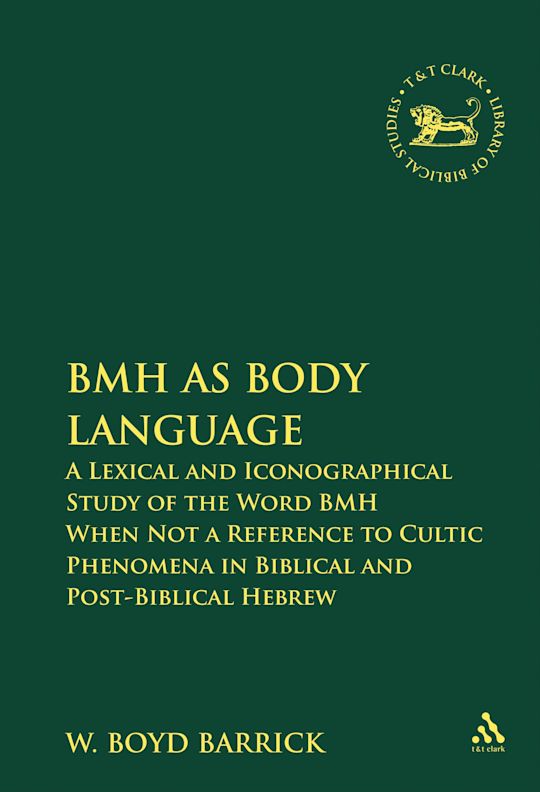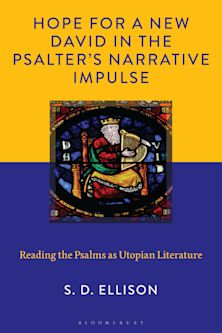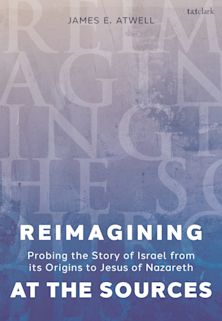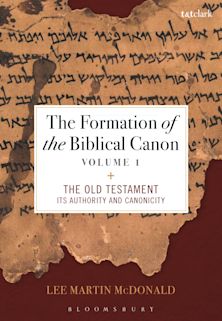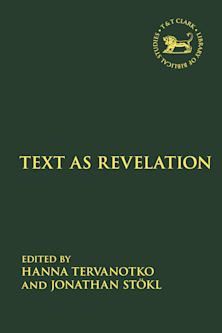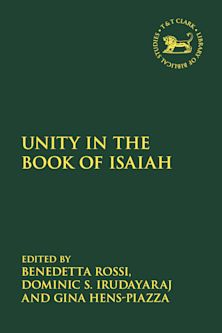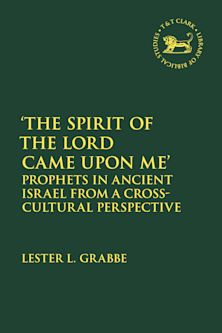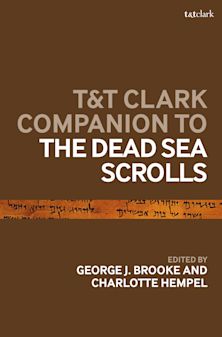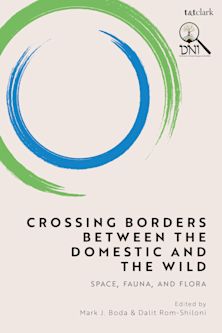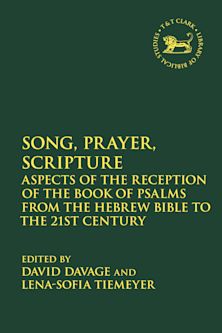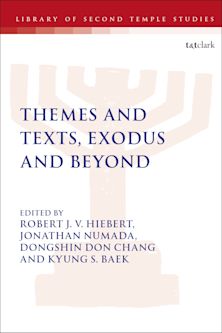- Home
- ACADEMIC
- Biblical Studies
- Old Testament / Hebrew Bible
- BMH as Body Language
BMH as Body Language
A Lexical and Iconographical Study of the Word BMH When Not a Reference to Cultic Phenomena in Biblical and Post-Biblical Hebrew
BMH as Body Language
A Lexical and Iconographical Study of the Word BMH When Not a Reference to Cultic Phenomena in Biblical and Post-Biblical Hebrew
This product is usually dispatched within 2-4 weeks
- Delivery and returns info
-
Flat rate of $10.00 for shipping anywhere in Australia
You must sign in to add this item to your wishlist. Please sign in or create an account
Description
It is customarily assumed that the Hebrew word BMH denotes a "high place," first a topographical elevation and derivatively a cult place elevated either by location or construction. This book offers a fresh, systematic, and comprehensive examination of the word in those biblical and post-biblical passages where it supposedly carries its primary topographical sense. Although the word is used in this way in only a handful of its attestations, they are sufficiently numerous and contextually diverse to yield sound systematic, rather than ad hoc, conclusions as to its semantic content. Special attention is paid to its likely Semitic and unlikely Greek cognates, pertinent literary, compositional, and text-critical matters, and the ideological and iconographical ambiance of each occurrence.
This study concludes that the non-cultic word BMH is actually *bomet, carrying primarily (if not always) an anatomical sense approximate to English "back," sometimes expanded to the "body" itself. The phrase bmty->rs (Amos 4:13, Micah 1:3, and CAT 1.4 VII 34; also Deut. 32:13a, Isa. 58:14ab-ba, and Sir. 46:9b) derives from the international mythic imagery of the Storm-God: it refers originally to the "mythological mountains," conceptualized anthropomorphically, which the god surmounts in theophany, symbolically expressing his cosmic victory and sovereignty. There is no instance where this word (even 2 Sam. 1:19a and 1:25b) is unequivocally a topographical reference.
The implications of these findings for identifying the bamah-sanctuary are briefly considered.
Table of Contents
Acknowledgements
CHAPTER 1: The Issue
CHAPTER 2: The Cognate Evidence
2.A. Semitic Possibilities
2.B. A Greek Possibility
2.C. Summary and Implications
Appendix 2.1. The (Lack of) Phoenician Evidence
Appendix 2.2. On the Syntax of Bamah Usage
2.2.a. The Use of BMH with the Prepositions B and
2.2.b. The Use of Hebrew BMH with the Verbs of Approach
CHAPTER 3: The Hebrew Evidence
3.A. Deuteronomy 33:29, 1QM 12:10 (and 19[1Q33].2 and 4QMb[4Q492]l.3-4), and Sirach 9:2
3.B. Job 9:8b
3.C. Micah 1:3 and Amos 4:13
3.D. Habakkuk 3:19 and 2 Samuel(Psalm 18):34
3.E. Deuteronomy 32:13a, Isaiah 58:14aß-ba, Sirach 46:9b, and 4QpsEzekb 4:12
3.F. Isaiah 14:14a
3.G. 1QIsaiaha 53:9a
3.H. 4QShirShabbd(4Q403) 1.2.2
3.I. Summary
Appendix 3.1. Habakkuk 3:13b and 3:15a
Appendix 3.2. Micah 1:2-7: Text and Compositional Matters
Appendix 3.3. 1QIsaa 53:9 and Matthew 27:57-60
CHAPTER 4: Possible Exceptions
4.A. Micah 3:12b(Jeremiah 26:18bb)
4.B. Numbers 21:28
4.C. Ezekiel 36:2
4.D. 2 Samuel 1:19a and 1:25b
CHAPTER 5: Final Thoughts
5.A. Semantic Speculation
5.B. Etymological Speculation
5.C. Bearing on the Meaning of BMH when a Reference to Cultic Phenomena
Bibliography
Indices
Product details
| Published | 01 Aug 2008 |
|---|---|
| Format | Hardback |
| Edition | 1st |
| Extent | 208 |
| ISBN | 9780567026583 |
| Imprint | T&T Clark |
| Dimensions | 234 x 156 mm |
| Series | The Library of Hebrew Bible/Old Testament Studies |
| Publisher | Bloomsbury Publishing |
About the contributors
Reviews
-
This book will carry the conversation forward regarding the proper understanding and translation for the words listed under the entry bmh. Lexicographers and Biblicists will find much to think about in Barrick's analysis.
Hebrew Studies, Volume LII









